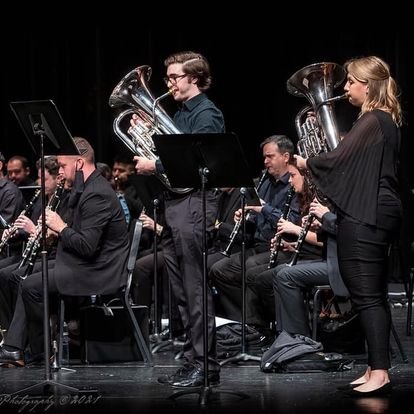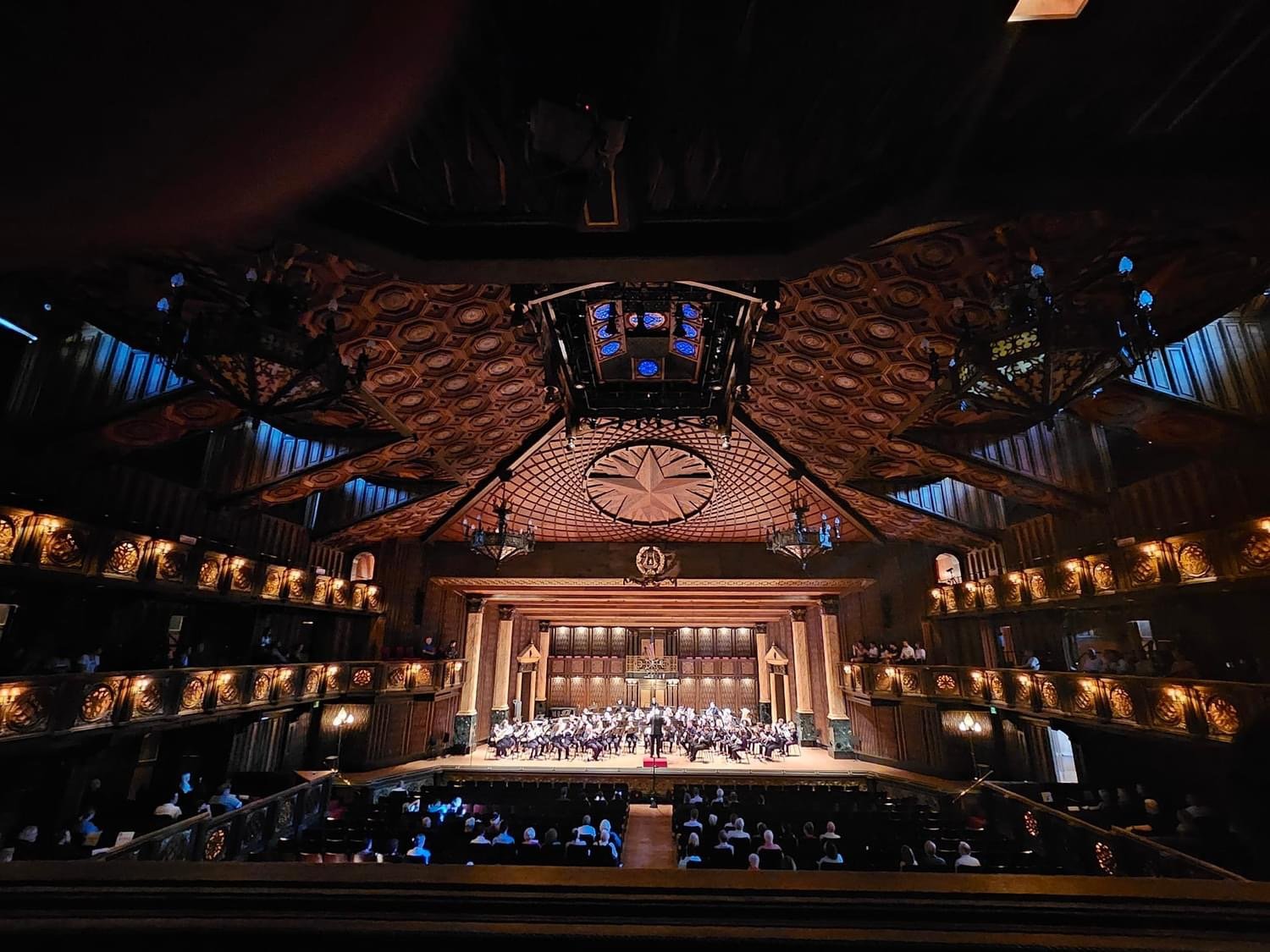
Winter Concert
Wednesday, December 11, 2024
7:00 PM
Houston Christian University
Dunham Theater
MUSIC SELECTIONS
-
Johan Halvorsen
arr. by Frederick FennellFrom the 10th through the 17th centuries, the Boyars were the highest ranking members of the Bulgarian, Romanian, Russian, and Ukrainian aristocracy, second only to the ruling princes. Halvorsen’s Entry March of the Boyars depicts the ceremonial entrance of these aristocrats in a theatrical setting. A solo clarinet introduces the regal theme, and more instruments are added to represent the approach of the entourage. Woodwind ornamentation complements the brass fanfares.
-
Leonard Bernstein
arr. by Michael SweeneyFrom Leonard Bernstein's masterwork Mass, this tuneful ballad has become its best-known and most often recorded song. Here is a beautifully poignant setting for band, authentically transcribed by Michael Sweeney, that features a trumpet soloist (or flugelhorn) as well as short solo spots for baritone or trombone.
-
Michael Markowski
I was lying in bed one night, scrolling rather lifelessly on my phone, when I came across a video a friend had shared. It was from a taped performance at the Regional Cultural Centre in Donegal, Ireland featuring Séamus McGuire lovingly playing his fiddle and Steve Cooney tenderly accompanying on his guitar. The pair had started playing a centuries-old love song from the Petrie Collection of Irish Music called “With Her Dog and Her Gun.” As I laid there listening for the first time, something inside me stirred. I could feel my heart begin to swell. Something about this song was immediately captivating and timeless and simple and easy and familiar—like I had known it all my life.
-
Samuel Barber
trans. by Guy M. DukerThe Symphony in One Movement was composed in 1936 and revised in 1942. ... Barber's mastery of form and balance is exemplified in this powerful early work. His ingenious synthesis of the classical four-movement symphony form combines variety with a remarkable economy of means.
-
Traditional Song
arr. by Fred J. Allen
Dr. Matthew Lamm, Guest ConductorMy Lord, What a Mornin' is one of many anonymous spirituals sung in the fields and in worship by African-American slaves in the 19th century. In this setting, sonorities of the band are utilized that express a longing for the end of time, when there will be no sorrow, no pain. The last line of the refrain serves as the title for this setting.
-
Vaclav Nelhybel
i. Allegro maestoso
ii. Adagio
iii. Allegro marcatoTrittico was composed in 1963 for Dr. William D. Revelli who gave the first performance of the work in the spring of 1964, in Ann Arbor, with the Symphonic Band of the University of Michigan.
The first and third movements are, in several ways, related to one another: their character is brilliantly forward-moving and energetic; the main theme of the first movement reappears in the culmination point of the third movement, and the instrumentation of the movements is identical (standard), with the individual instruments themselves being used quite similarly.
-
Traditional Songs
arr. by Terry Crummel
Terry Crummel, Guest ConductorDing Dong, Merrily on High is originally a 16th century French dance tune. In 1924 English composer George Ratcliffe Woodward added lyrics to it.
Silent Night was first performed on Christmas Eve 1818, in Salzburg, Austria.
Deck the Halls is a traditional Christmas carol. The melody is Welsh, dating back to the 16th century, while the English lyrics written by a Scottish musician Thomas Oliphant, date back to 1862.
THE MUSICIANS





Conductors
-

Larry Matysiak
Conductor
-

Rick Yancey
Conductor
-

Dr. Matthew Lamm
Guest Conductor
-

Terry Crummel
Guest Conductor




